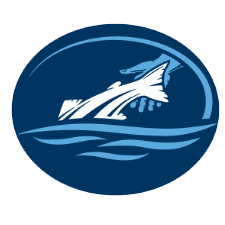Conservation Advocates Serve Notice of Intent to Sue State and Federal Agencies Over Columbia River Hatchery Programs Harming Wild Salmon Recovery
The Lower Columbia River is home to __ salmonid hatcheries.
On January 26, 2024, Wild Fish Conservancy and The Conservation Angler issued a 60-day Notice of Intent to sue federal, state, and local agencies for chronic and ongoing violations of the Endangered Species Act (ESA). The notice contends that these agencies are operating hatchery programs in the lower Columbia River Basin (i.e., below Bonneville Dam) under the federal Mitchell Act and Select Area Fishery Enhancement (SAFE) programs without complying with key provisions of the ESA designed to prevent the extinction of imperiled wild salmon and to protect their ecosystems.
Together, these programs are harming threatened and endangered Chinook, coho, and chum salmon, as well as steelhead and Southern Resident killer whales. These hatchery programs harm these species and their critical habitats through a variety of mechanisms, including facility effects, fish removal activities, genetic and ecological interactions, harvest, and monitoring and evaluation.
Congress enacted the Mitchell Act in 1938, to try to mitigate the adverse effects to salmon in the Columbia River Basin resulting from the construction of dams, water diversions, logging, and pollution. NMFS distributes funds appropriated under the Mitchell Act that Congress has allocated to hatchery programs. In recent years, Mitchell Act funding has ranged between $15,000,000 and $22,000,000 annually, supporting roughly one-third of all hatchery production in the Columbia River. A 2023 study evaluated the impact of the federal government’s total $9 billion-dollar investment in hatchery production and restoration spending in the Columbia River over the past forty years. Despite the scale of the investment, the results showed no evidence of increased abundance of wild salmon or steelhead in the Columbia River Basin.
The SAFE program was developed by the Northwest Power Planning Council (currently Northwest Power and Conservation Council) in 1993 to enhance fisheries. The program was a well-intended attempt to concentrate hatchery fish releases and fisheries in an “off channel” location away from wild salmon migration and spawning areas in the Columbia River.
Federal agencies are obligated under section 7 of the ESA to “insure that any action authorized, funded, or carried out by such agency… is not likely to jeopardize the continued existence of any endangered or threatened species or result in the destruction or adverse modification of habitat that has been designated as critical for such species.” To satisfy this requirement, federal agencies planning to fund or undertake an action that “may affect” ESA-listed species or their critical habitat are required to immediately consult with NMFS and/or the United States Fish and Wildlife Service (FWS) to quantify the effects of the proposed action and their likely adverse impact on the listed species and their critical habitat.
Wild Fish Conservancy sued the NMFS and the Department of Commerce in 2016 to force them to comply with the ESA when funding and authorizing Mitchell Act hatcheries. As a result of that successful litigation, NMFS was required to develop a Biological Opinion on Mitchell Act hatcheries setting limits to reduce harm to wild salmon and steelhead recovery.
Today’s notice letter details how NMFS has failed to comply with key provisions and standards set by the agency on both the Mitchell Act and SAFE programs, including exceeding percentages of hatchery fish allowed on wild spawning grounds (one of the primary ways hatcheries harm endangered salmon populations). NMFS officials were also unable to produce any of the annual reports required under the biological opinion intended to show compliance with the terms of the Mitchell Act.
“Despite decades of science demonstrating the damaging effects of hatcheries on wild salmon, government at all levels are knowingly complacent with violating the law and causing the decline of wild salmon and steelhead throughout the Columbia River basin,” says Emma Helverson, Executive Director for Wild Fish Conservancy. “We’ve run out of time and options. These species represent an irreplaceable public heritage, and we’re taking every action to hold the government accountable for perpetuating this chronic harm caused by Columbia River hatcheries before it’s too late.”
Kalama Hatchery in Washington. Photo by Conrad Gowell, Wild Fish Conservancy
In addition to NMFS, publicly available data demonstrates that local and state agencies in both Oregon and Washington are also failing to comply with many requirements intended to protect ESA-listed species under the Mitchell Act and SAFE programs.
“The ESA is the nation’s most important tool to protect biodiversity, and Congress provided a means under the ESA for the public to hold entities accountable for violating the Act. The data clearly shows that the Mitchell Act and SAFE hatchery programs are failing to comply with requirements to prevent the extinction of ESA-listed steelhead, chinook, coho, and chum salmon. We are filing this notice to hold the agencies accountable for these failures and to ensure that these species receive the ESA protections that they are afforded by law,” said David Moskowitz, Executive Director for The Conservation Angler.
The groups are represented by Kampmeier & Knutsen, PLLC of Portland, OR and Seattle, WA, and Rob Kirschner of The Conservation Angler.
Wild Fish Conservancy is a nonprofit conservation organization headquartered in Washington State and dedicated to preserving, protecting and restoring the northwest’s wild fish and the ecosystems they depend on, through science, education, and advocacy.
The Conservation Angler fights for the protection of wild Pacific anadromous fish populations throughout the Pacific Northwest and Russia’s Kamchatka Peninsula.



